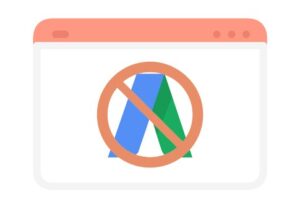You must know what is SEO copywriting if you want to succeed on the digital marketing front. Nowadays, if your company wants to hold a chance against the competition, it’s important to go beyond social media and paid traffic; although equally important in the long run, SEO strategies highlight your virtual presence in the never-ending ocean of products and services without much cost, drawing attention to your official website organically.
That is, of course, if you do it right – and that’s what we are going to teach you today. Keep reading the article to learn what is SEO copywriting and all the steps of implementing this lucrative approach.
Read also: Google Ads vs Facebook Ads – Choosing the best option
What is SEO copywriting?
SEO copywriting is the practice of writing text for web pages with the dual goals of:
- engaging the reader instantly with smart cues;
- and achieving higher rankings in search engine results pages (SERPs), particularly Google.
As we’ll see in depth in the next section, this form of writing involves strategically optimizing webpage content by incorporating target keywords and phrases that people are likely to search for. The ultimate aim is to drive more traffic to a website by making the content more visible and appealing in search engine results.
This is where we draw the main line that separates organic traffic from paid traffic. SEO copywriting is all about natural conversions – in other words, your content only appears to people if they look for it. Paid traffic campaigns from Google and Facebook, on the other hand, lead your content into people’s view only upon payment, although the results here are much faster.

You see, organic traffic comes gradually – but it’s worth every penny if you are patient enough to wait. Not only does your text have to feature the best possible content out of the existing bunch online but it also needs to be shown among the first-ranked on the search page, the goal being to stand on top. If the website’s domain is new, it may take a considerable time to start showing up on people’s screens.
However, don’t worry: you are here to learn precisely how to optimize your approach and get the ideal results as soon as possible! Shall we begin?
6 steps to succeed with SEO copywriting
First of all, as a business, you must narrow down your persona and target audience. Once you have that settled, you can start working on the commercial branches that may spike from those – and this is where our SEO planning begins.
The detailed steps we are about to go over ensure that each part of your SEO copywriting strategy is well-crafted and aligned with your overall digital marketing goals – leading to content that not only ranks well but also genuinely engages and satisfies your audience.
Step 1: Keyword Research
Keyword research is the process of identifying the terms that your target audience is searching for. This helps you understand what topics to write about and which terms to use in your content – and several tools can help you find the right keywords. Here are a few popular ones:
- Google Keyword Planner: This free tool is integrated with Google Ads and provides insights into the volume and competition for keywords. It’s great for finding keywords related to your business that you might want to bid on for PPC campaigns but also works for SEO.
- SEMrush: Offers detailed keyword analysis and competitive insights, showing what keywords your competitors are ranking for.
- Ubersuggest: A more affordable tool that provides keyword suggestions, SERP analysis, and SEO metrics.

You can then differentiate keywords based on what intent they carry (informational, navigational, transactional, etc.). This helps in creating content that matches user intent. Look for long-tail keywords as well, given how these are longer and more specific phrases that visitors are likely to use when they’re closer to a point-of-purchase or using voice search. They are generally less competitive but can lead to better conversion rates.
Step 2: Content Planning
Once you have your keywords, the next step is planning your content. This involves structuring your content to best address the topics that resonate with your audience while optimizing for search engines.
- Create a Content Calendar: Plan when and what you will publish. This helps in organizing topics around important dates, product launches, or seasonal trends.
- Define Content Types: Depending on your audience and objectives, decide whether you’ll create blog posts, articles, product descriptions, videos, or infographics.
- Outline Each Piece of Content: For each topic, create an outline that details:
- Title: Incorporate your main keyword if possible.
- Headers: Plan sections (H2, H3 tags) around related keywords.
- Introduction and Conclusion: Decide how you will hook readers and summarize key points.
- Call to Action: Plan what actions you want readers to take after consuming your content.
- Research Competitors: Look at top-ranking content for your keywords. Identify gaps in their content that you can fill or aspects where you can create a better, more comprehensive resource.
- User Engagement Strategies: Plan how to make the content interactive (e.g., quizzes, polls, or infographics) to engage users more deeply.
Step 3: Writing High-Quality Content
Creating content that stands out and engages your audience involves more than just inserting keywords. Here’s how to ensure the content you produce is of high quality:
- Understand User Intent: Tailor your content to meet the specific needs of users as indicated by their search queries. This means addressing their questions, providing solutions, or offering deep insights into their topics of interest.
- Write for Your Audience: Use a tone and language that resonates with your audience. Whether it’s professional, conversational, or technical, adapting your style to your readers can enhance engagement.
- Include Actionable Insights: Provide practical advice or actionable tips. Readers should come away with new knowledge or tools they can apply.
- Use Reliable Sources: Enhance credibility by citing trustworthy sources. This not only bolsters the content’s authority but also builds trust with your audience.
- Incorporate Multimedia: Text alone can be dense. Break it up with relevant images, videos, infographics, or diagrams that complement and elucidate the text.
- Optimize for Readability: Use short paragraphs, bullet points, and plenty of white space to make your content easy to read. Subheadings can help guide readers through the text and improve scannability.

Step 4: Optimizing for Keywords
Keyword optimization is about using keywords wisely to boost SEO without sacrificing readability. Here’s how to effectively incorporate keywords:
- Title Tags and Meta Descriptions: Include main keywords in these elements as they are crucial for SEO and are the first interaction users have with your content on SERPs.
- Headings and Subheadings: Utilize headings to structure your content and include secondary keywords where they naturally fit.
- First 200 Words: Try to use your primary keyword within the first 200 words of the content. This is important for letting search engines understand what the content is about.
- Keyword Variations: Use synonyms and related terms to avoid repetition and help your content sound more natural while covering more semantic ground.
- Avoid Keyword Stuffing: Overusing keywords can lead to penalties from search engines and degrade the user experience. Keep your keyword density natural and unforced.
Step 5: Enhancing User Experience (UX)
SEO isn’t just about keywords; the overall user experience plays a significant role in content performance:
- Website Design: Ensure your website is visually appealing and easy to navigate. A clean, organized layout can help retain visitors.
- Mobile Optimization: With the increasing use of mobile devices, ensure your site is responsive and loads quickly on all devices.
- Loading Speed: Optimize images and streamline your site’s backend to improve loading times, as speed is a key factor in SEO and user retention.
- Interactive Elements: Include elements like interactive polls, quizzes, or clickable sliders to keep users engaged and encourage them to interact with your content.
- Accessibility: Ensure that your content is accessible to all users, including those with disabilities. This includes using proper contrast ratios, alt text for images, and accessible navigation.

Step 6: Monitoring and Adjusting
Finally, continually monitoring and adjusting your content is key to maintaining and improving its effectiveness:
- Analytics Tools: Use tools like Google Analytics to track how visitors interact with your content. Look at metrics such as bounce rate, average session duration, and conversions.
- SEO Performance Tools: Tools like Google Search Console can help you understand your content’s performance in SERPs, showing which keywords it’s ranking for and how many clicks it’s getting.
- Feedback Mechanisms: Encourage feedback from users through comments or surveys. Direct user feedback can provide insights into how your content is received and areas for improvement.
- Update Regularly: Regularly revisit your content to update it with fresh information, which can help maintain or improve its search rankings.
- A/B Testing: Experiment with different headlines, formats, or layouts to see what works best in terms of engagement and SEO performance.
Laços is the partner that your company needs!
Now you know what is SEO copywriting and everything it means to online businesses.
But we also know how tough it can be to plan out every little detail when you have so much professional work to do already. If that’s your case, our team at Laços can give you a hand – and help you with anything marketing-related while at it, particularly when it comes to a powerful strategy of SEO copywriting.
As a digital marketing agency based in Brazil, we provide the right team for all your needs on this front. You can schedule a free meeting with us right now – and you’ll leave the reunion with a vast overview of what your company requires, the first steps to creating lucrative strategies, and how to optimize your current online activities.






